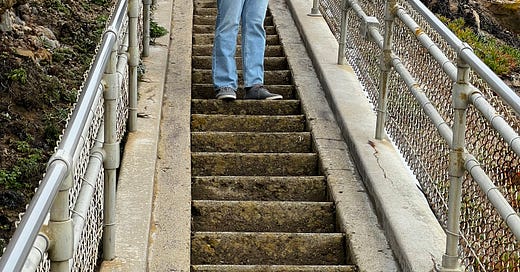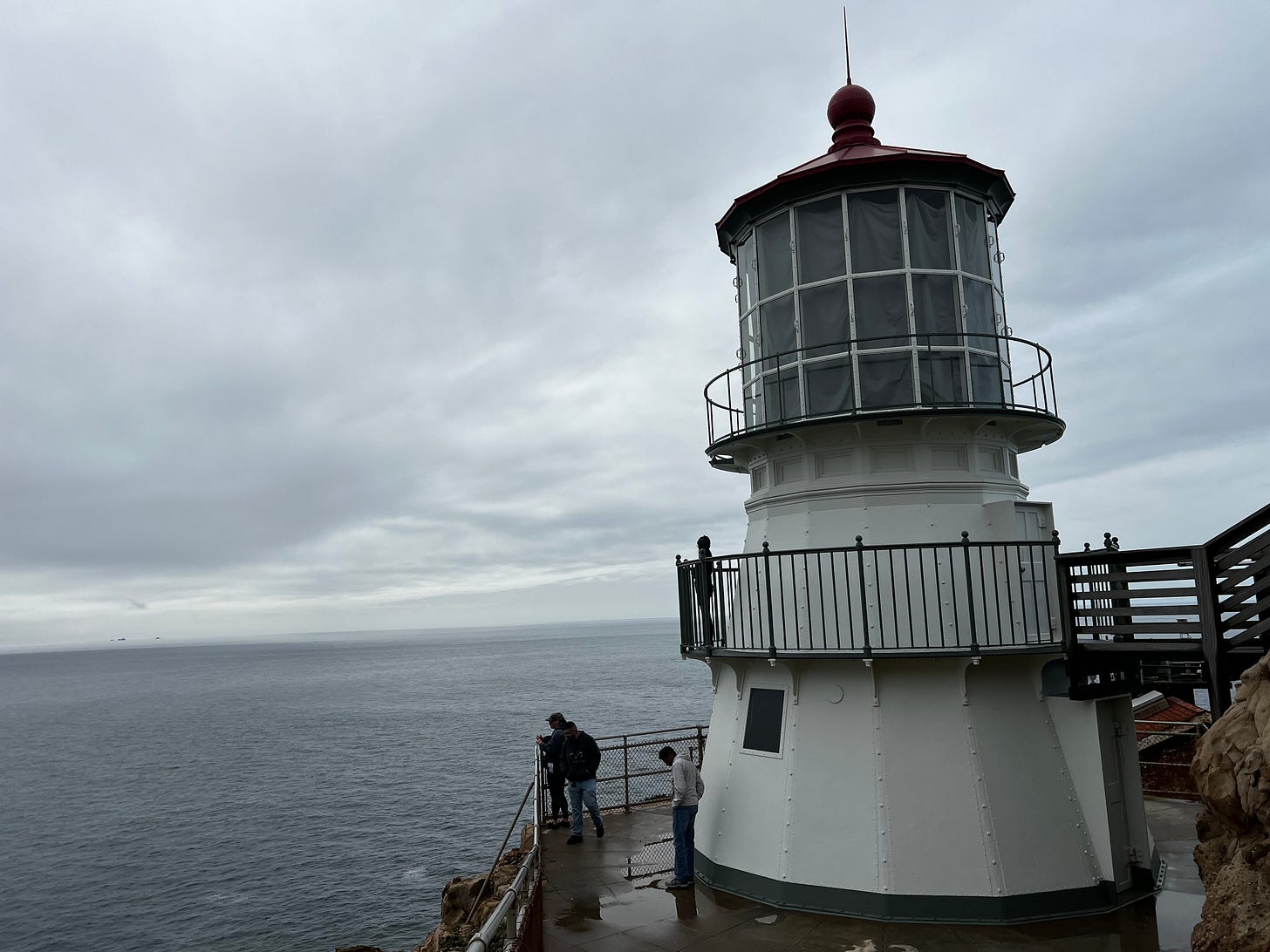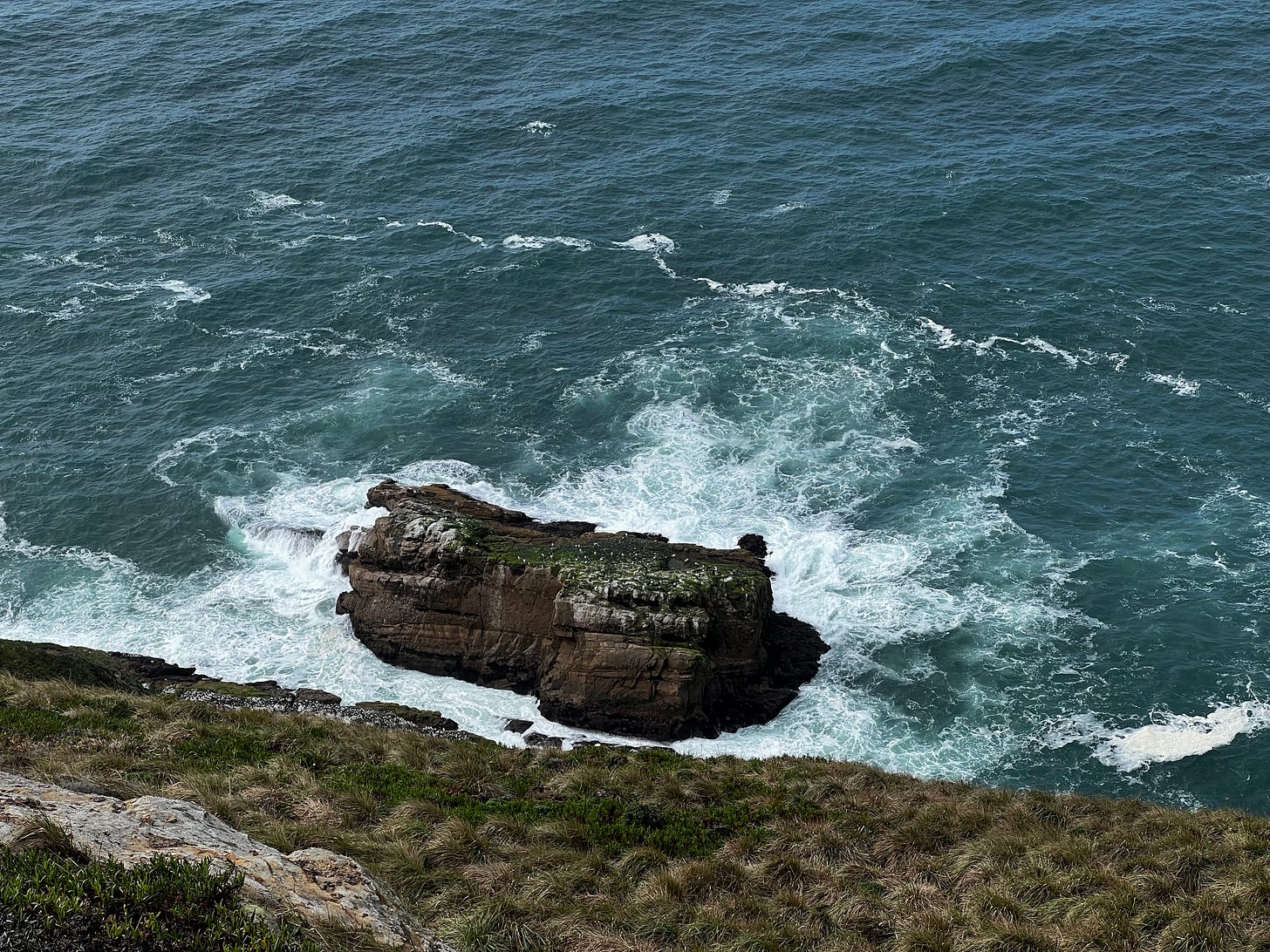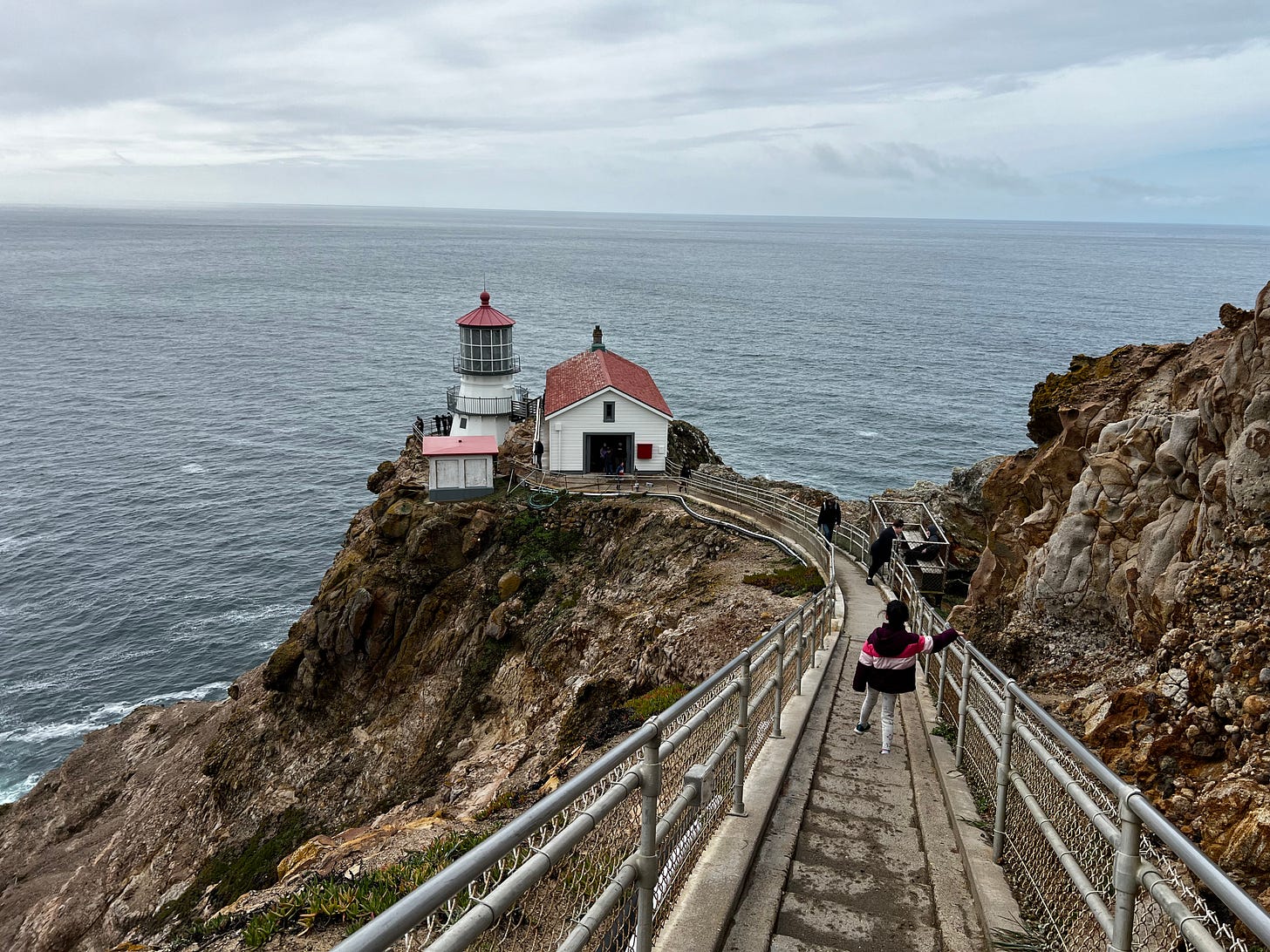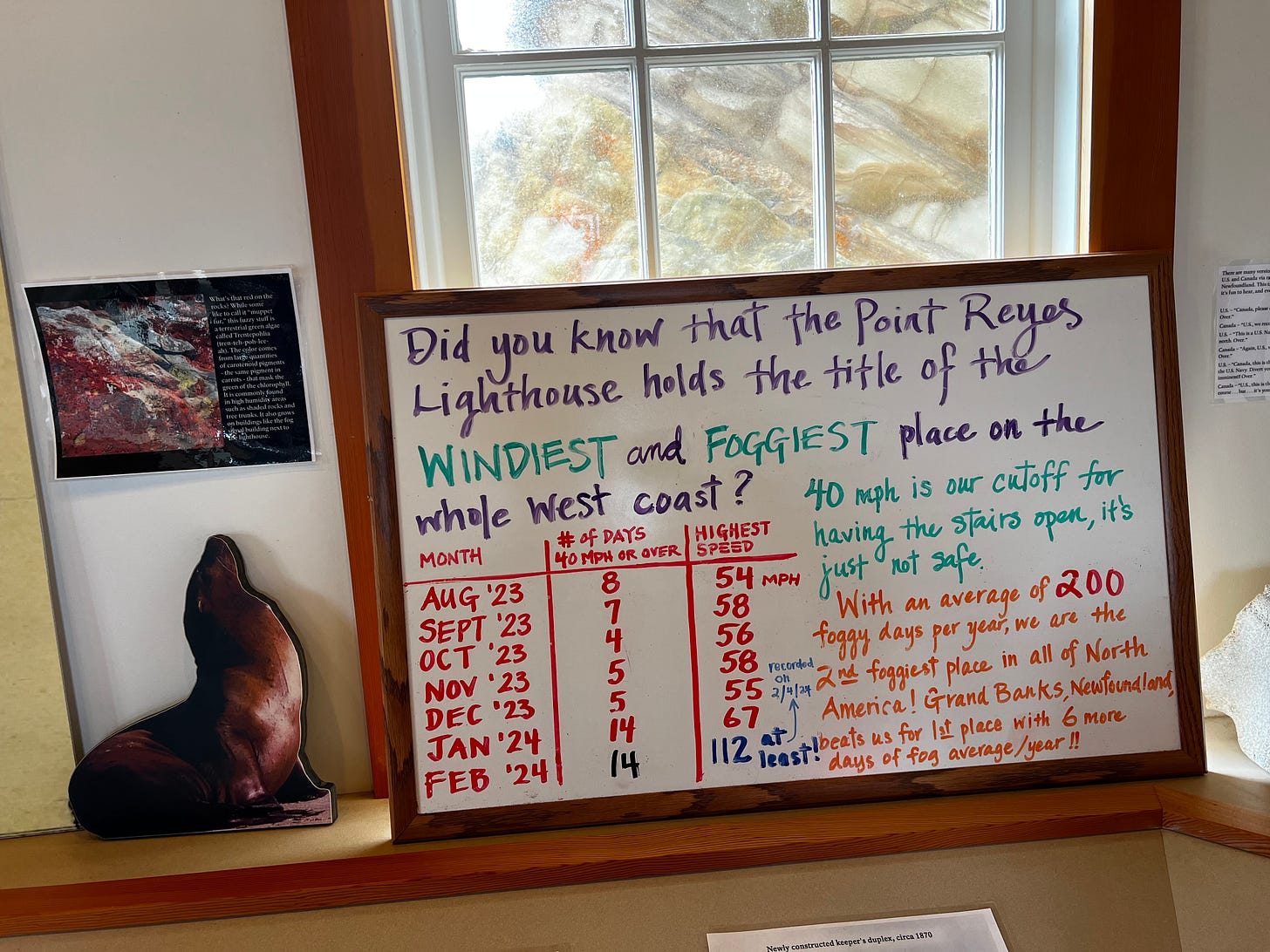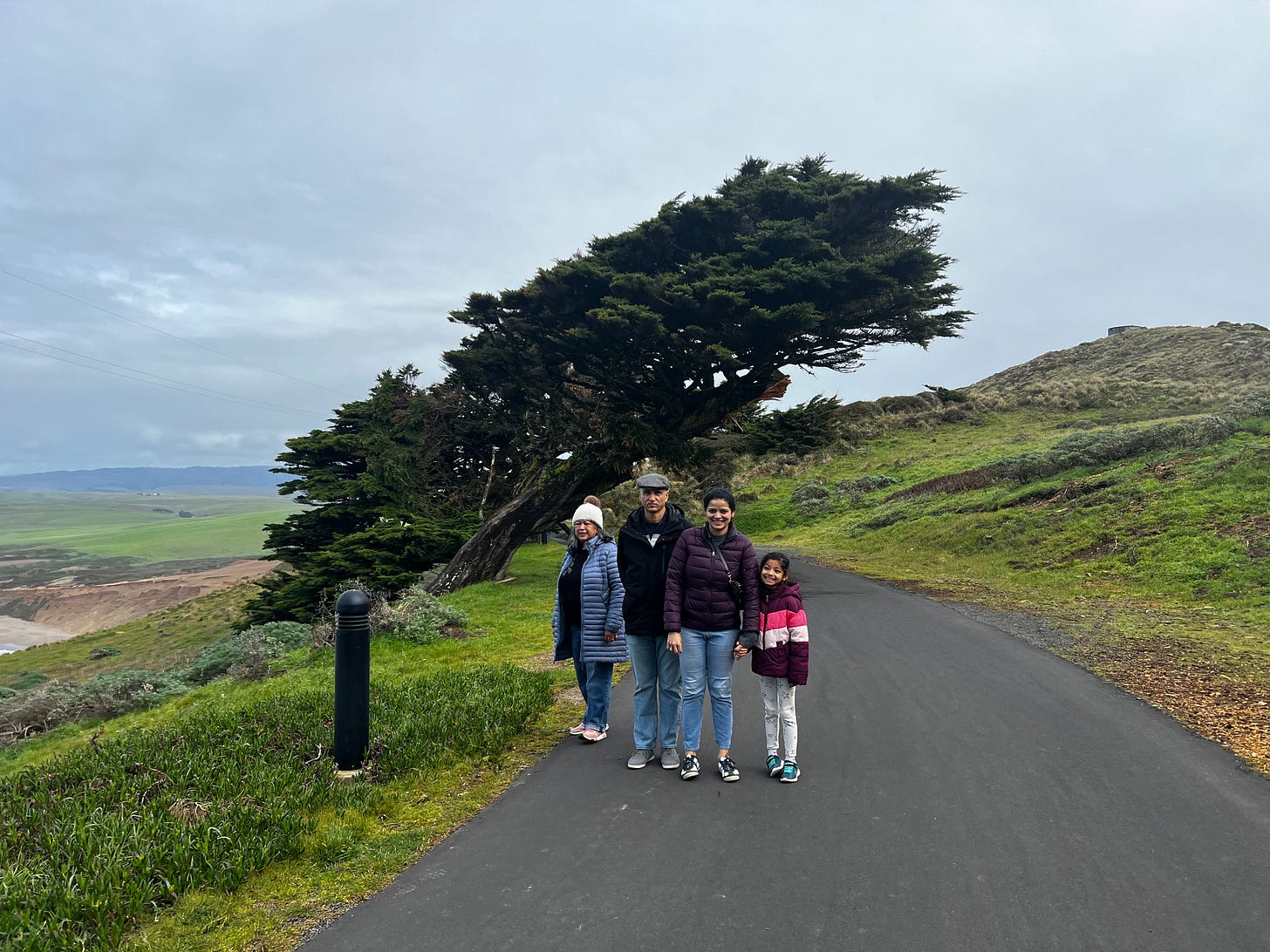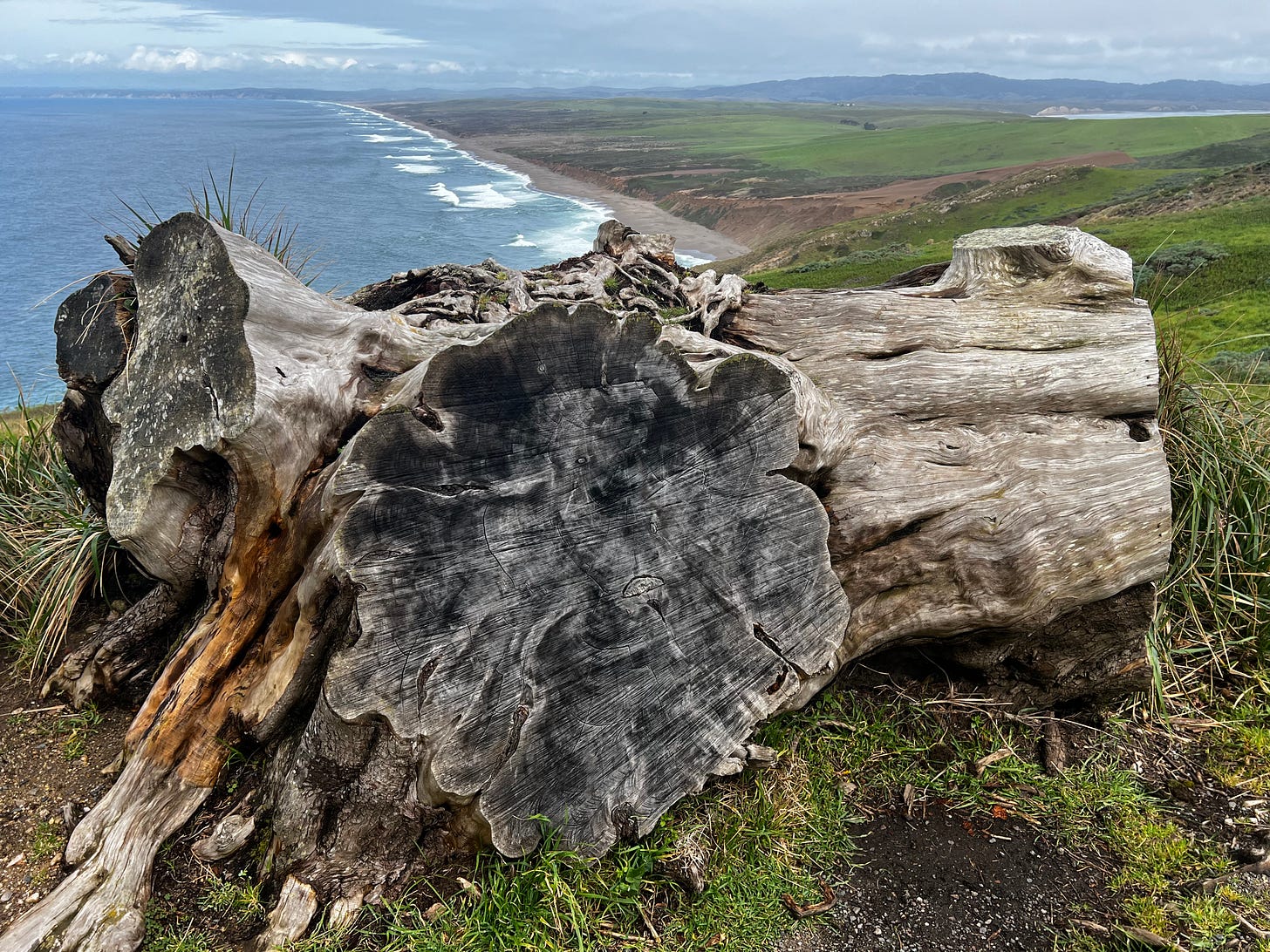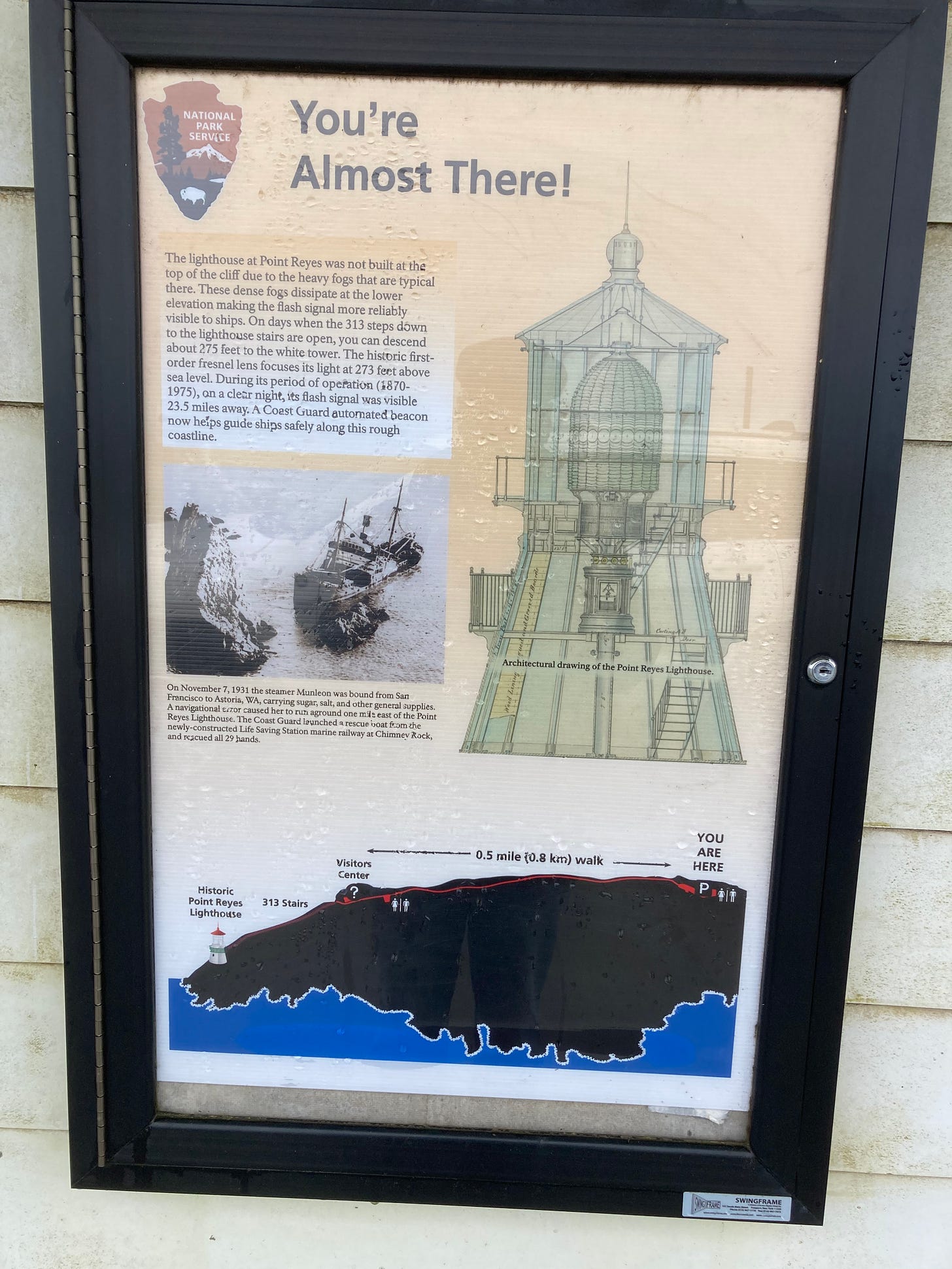Point Reyes National Seashore in California is a gem of natural beauty, offering visitors a diverse range of attractions and experiences. it's a fantastic tourist destination.The lighthouse at Point Reyes was constructed in response to the treacherous conditions along the coast, including dense fog and rugged terrain, which posed a serious threat to ships navigating the area.wether you want to go trailing or beaching or seeing the wild life it has all of it and it is known as a national park .It is close to Sanfrancisco and ideal to include it when one is spending time there .
Natural Beauty and Diversity: Point Reyes is renowned for its stunning coastal landscapes, pristine beaches, and diverse ecosystems. From rugged cliffs overlooking the Pacific Ocean to serene estuaries and verdant forests, the park showcases the beauty of California's natural world. Visitors can explore sandy shores, tidal marshes, and rolling hills, encountering a rich tapestry of flora and fauna along the way.
Foggy Conditions and Navigation: The dense fog that frequently blankets Point Reyes is legendary, earning the area the nickname "The Great Grey." This persistent fog, caused by the collision of cold ocean currents with the warm air of the California coast, creates challenging conditions for sailors and contributes to the region's maritime history. The Point Reyes Lighthouse played a vital role in guiding ships through these foggy waters, helping to prevent shipwrecks and save countless lives
Historical Significance: Beyond its natural splendor, Point Reyes has significant historical value. The area has been inhabited by Native American tribes for thousands of years, and evidence of their presence can still be found in the form of shell middens and other artifacts. During the 19th century, Point Reyes was home to dairy ranches and served as a key navigational point for ships along the coast. Today, remnants of the park's agricultural past, such as old barns and farmhouses, offer glimpses into its history.
Ideal Visiting Times: Point Reyes National Seashore is a year-round destination, but the best time to visit is Spring and fall , offering mild weather and fewer crowds compared to the summer months. Springtime brings wildflowers in bloom and opportunities for birdwatching as migratory species pass through the area. Fall offers pleasant temperatures for hiking and exploring, along with the chance to witness elephant seal and gray whale migrations.
Construction and Purpose: The Point Reyes Lighthouse was built in 1870 to guide ships safely past the hazardous Point Reyes Headlands. Designed by civil engineer J.M. Kelley and constructed by the Lighthouse Board, it stands as a testament to the ingenuity and determination of the era's builders. Perched on a rocky promontory 300 feet above sea level, the lighthouse's powerful beacon provided crucial guidance to mariners navigating the fog-shrouded waters of the Pacific Coast. Also the stairs reaching the light house in all 313 stairs pose a great challenge and make the trip interesting and enjoyable .
Top Attractions:
Lighthouse: The Point Reyes Lighthouse, perched on the park's westernmost point, offers breathtaking views of the ocean and rugged coastline. Visitors can tour the historic lighthouse and learn about its role in maritime navigation.
Beaches: Point Reyes boasts several picturesque beaches, including Limantour Beach, Drake's Beach, and South Beach. Whether you're seeking a leisurely stroll along the shore or an exhilarating surf session, the park has a beach for every taste.
Hiking Trails: With over 150 miles of trails winding through diverse landscapes, Point Reyes is a hiker's paradise. From easy coastal walks to challenging backcountry treks, there are options for hikers of all skill levels. Popular trails include the Tomales Point Trail, Chimney Rock Trail, and Bear Valley Trail.
Wildlife Viewing: Point Reyes is home to a wealth of wildlife, including tule elk, harbor seals, and migratory birds. Elephant seals can be observed year-round at Drakes Beach, while gray whales can often be spotted from coastal overlooks during their winter and spring migrations.In terms of shark movements, Point Reyes is part of the Greater Farallones National Marine Sanctuary, which is known for its rich biodiversity and abundance of marine predators, including great white sharks. During the fall months, when elephant seals return to the area to breed and give birth, great white sharks are known to frequent the waters off Point Reyes in search of prey. This natural phenomenon attracts researchers and wildlife enthusiasts who seek to observe and study these magnificent apex predators in their native habitat.
Historic Sites: Explore the park's rich history by visiting historic sites such as the Point Reyes Lifeboat Station, the Olema Valley Ranch, and the Kule Loklo Native American Village.
Connection to "Jaws" and Shark Movements: The foggy, mysterious atmosphere of Point Reyes, combined with its rugged coastline and abundant marine life, has captured the imagination of filmmakers and nature enthusiasts alike. In Steven Spielberg's iconic film "Jaws," the fictional town of Amity Island was inspired by the coastal communities of New England, but the eerie ambiance and sense of isolation depicted in the movie resonate with the atmosphere of Point Reyes.
Overall, Point Reyes National Seashore offers a captivating blend of natural beauty, cultural heritage, and outdoor recreation, making it a must-visit destination for nature lovers and history enthusiasts alike. Whether you're seeking adventure or tranquility, this coastal gem has something to offer everyone.Overall, Point Reyes National Seashore's history, foggy conditions, and abundant marine life have contributed to its fame and allure as a destination for visitors seeking adventure, natural beauty, and a connection to California's maritime heritage. Whether exploring the rugged coastline, hiking along scenic trails, or marvelling at the diversity of marine life, visitors to Point Reyes are sure to be captivated by its timeless appeal.
